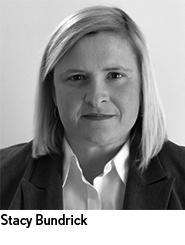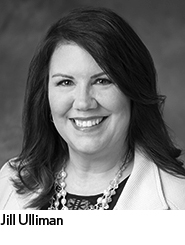
Automating procurement and payables processes is one way for healthcare organizations to optimize business performance. By leveraging technology, organizations can streamline accounts payable functions, saving themselves time and money. Moreover, electronic offerings can improve a healthcare organization’s relationship with its vendors, strengthening the supply chain and making it more nimble. In this action brief, sponsored by GHX, several healthcare leaders make the business case for automation and share their strategies for adopting and onboarding an automation platform.
Targeting certain functions
When tackling accounts payable, there are two main aspects that rise to the surface as potential low hanging fruit for improvement.
- Invoice approval
- Vendor payment
Regarding invoice approval, there are a few solutions that can enhance the efficiency and reliability of the process. For example, electronic data interchange (EDI) lets vendors submit invoices electronically using a standard format. Not only does this eliminate the use of paper, but it enables faster approval because an organization does not have to route a paper invoice around to different locations. The standard format also keeps things consistent across vendors, which can yield even greater efficiencies while reducing the likelihood of error. Although a hospital or health system agrees to an EDI arrangement, the onus is on the vendor to submit invoices through this method.

For those suppliers not able or willing to pursue an EDI approach, there are other electronic means for submitting payment requests. Healthcare organizations can receive vendor invoices via email or scan paper invoices into a central repository. Both of these methods also support faster invoice approval as anyone in the organization can access the invoices for review. Organizations often leverage a combination of EDI, email, and scanning, letting suppliers choose which option works best for them.
As with invoicing, electronic payment can take a number of different forms. Some of the most common are automated clearing house (ACH) payments, credit cards, and single use accounts (SUA)—otherwise known as virtual cards or ghost cards. All of these payment methods limit the need for paper checks. Again, organizations frequently offer a combination of these options to vendors, so they can select the preferred one. ACH payments are popular because they represent a direct payment. However, credit cards can be advantageous for vendors as well, although they are typically charged a fee to receive payment in this manner.
Realizing the benefits of an automated approach
Embracing electronic solutions can yield tremendous benefits for healthcare organizations. Here are some key elements that comprise technology’s value proposition.

Scalability. Paper-based processes are time consuming and resource intensive, and they can be hard to manage as an organization grows. “At Ochsner Health System, we grew exponentially after Hurricane Katrina, acquiring several hospitals across the region after the storm,” says Stacy Bundrick, vice president, corporate systems at Ochsner Health System in Jefferson, Louisiana. “At the time, we had a fairly cumbersome accounts payable process, which is not a good situation when you’re growing fast across a large geographic area. Although some of our vendors—a little less than 50 percent—submitted invoices via EDI, many still sent paper, and we needed a way to limit those. We began looking for an imaging tool that would scan paper invoices, housing them in a central location that authorized personnel could access. This allowed staff in our central office to easily and rapidly approve invoices from across the state. No longer did we have to route paper around the organization, which increased efficiency and reduced the chances of error or loss. Because of our increased use of technology, we were able to navigate the 200 percent increase in growth without adding any FTEs in the accounts payable department.”
Better cash management. Automated payment systems can help organizations more effectively manage their cash. SUA programs can be especially beneficial in this regard. “Most hospitals’ A/R days hover around 40, and yet many vendors want to be paid within 30 days,” says Bundrick. “That makes it tough to meet supplier expectations while still being a good financial steward. Just as you don’t want to pay your personal bills before you receive your paycheck, organizations would like to delay paying their bills until they receive patient and payer income. An SUA program offers us a middle ground where vendors that want to get paid faster can sign up for the program. They receive payment quickly, and we only have to pay one bill at the end of the month, allowing us to take advantage of the float and enable stronger cash management.”

SUA programs also can help the accounts payable department become a revenue-generating area. “When organizations use a credit card or virtual card solution, there are significant financial benefits,” says Matt Meyer, director of healthcare banking for the First National Bank of Omaha in Omaha, Nebraska. “The more payment you can push through a card, the larger the rebate check back to the provider. These rebates turn a function that was historically a cost center into a profit area, providing additional revenue to the organization.”
Electronic options also curb the costs incurred by using paper. “After automating our accounts payable processes, we saw a 46 percent reduction in paper checks, which saved us approximately $60,000 in postage, check stock, and envelopes,” says Jill Ulliman, system director of accounts payable for OhioHealth in Columbus, Ohio. “On top of that, we received rebates by using an SUA system, earning nearly $2 million in fiscal year 2018. We also increased our working capital because we gained an additional 25 days until the credit card statement was due.”
More responsive vendor management. By allowing vendors to submit invoices electronically and receive payments via credit card or ACH, organizations can improve their supplier relationships. “Our goal in automating was to eliminate human error as much as possible and speed payment for our high-volume vendors,” says Peter DiDio, vice president and controller for St Luke’s Health System in Boise, Id. “We also wanted to avoid shuffling invoices across the organization to get signature approval, which was not only time consuming and resource intensive for us but also could further delay payments for vendors, particularly if an invoice was lost. In addition to the standard systems, we tried to think outside the box in how to enhance relationships, implementing programs like a vendor portal that limits the number of direct calls for vendor payment inquiries. We also employ a solution that lets us reduce the number of invoices from high-volume vendors and set ordering standards for certain products.”

Staff optimization. In addition to the cost benefits, there are staffing advantages to electronic options as well. “Everyone is stretched thin—especially in the finance area—and accounts payable staff generally wear a lot of hats,” says First National’s Meyer. “In a paper-based environment, staff are required to do a number of manual tasks that don’t fully leverage their skills. One of the primary benefits of switching to automated solutions—whether that’s electronic invoicing or payment—is that organizations can make the accounts payable staff more effective in their roles. This doesn’t mean the organization is going to cut jobs, it’s more that the facility can re-task these professionals into work that is more suitable for their skillsets, education, and background.”
By freeing staff of mundane tasks, they can become more proactive with problem solving. “One of the benefits we saw was that our employee experience changed from an ‘old school’ data entry job to a career that continues to challenge and educate,” says St. Luke’s DiDio. “Having employees evaluate the workflows required to make the technology work has raised the team’s competency. Instead of focusing on completing tasks, they have become problem solvers. Troubleshooting is also easier because we have visibility into our outstanding payables and can get in front of issues before they escalate into larger problems.”
Reduced fraud. Electronic solutions also can safeguard compliance and preserve information security. “Automated invoicing and payment mitigate the risk of fraud,” says Sondra Crowley, senior director of ERP business transformation for Texas Health Resources in Arlington, Texas. “Any time you can simultaneously improve efficiency, reliability, and security, it is a good thing, and we have found the move away from paper to be a beneficial one on all fronts.”
Five steps for making the switch to automation
Once an organization embraces the need for automation, it is important to have a clear plan for how to move from manual processes to electronic solutions. Here are five straightforward steps for making the switch.
Although most organizations will experience similar challenges in the accounts payable department, it is wise to gather a complete appreciation of what your organization’s specific pain points are. The best way to do this is to closely examine your current operations. “Taking a holistic view is critical,” says First National’s Meyer. “If you don’t, you could miss key opportunities. For example, initially, you may be focused on streamlining payments to reduce the number of checks and receive bonuses. However, reimagining accounts payable involves much more than that. You also should look at how your procurement and requisition processes function and see whether they can be automated. Bottom line: Organizations must allocate the time to walk through the entire payables process from beginning to end. The detail garnered from this mapping exercise will start to reveal potential roadblocks and problems that need to be addressed.”
Once you know what the problems are, you can work towards finding the right solutions to fix them. “There isn’t necessarily a one-size-fits-all approach that is going to handle every single pain point,” says Meyer. “As such, you have to do your due diligence and carefully evaluate the programs that are out there to determine which ones are appropriate for your organization in terms of meeting your needs and integrating with your current electronic health record (EHR) and other technology.” At this point, it can be helpful to pull a team together to explore and assess various possibilities. Team members could include accounts payable staff, financial leaders, and information technology personnel. “Other providers can be a good source of information during this factfinding process,” says Meyer. “Reaching out to peer organizations to see what works best for them can be valuable. Professional organizations and other associations can also serve as resources for best practices.”
As you explore different options, it is also a smart idea to engage leadership in the effort to make sure they are committed to the technology. When senior leaders are involved and enthusiastic, they are more likely to allocate the necessary resources. “For us, it came down to an acknowledgement by everyone involved that we needed to be more efficient in order to have systems and processes that were scalable,” says Ochsner’s Bundrick. “Once you agree there are issues that need to be addressed, then you can work with your IT department and leadership team to talk about potential solutions and establish short-term and long-term goals.”
For some organizations, automating accounts payable is not a hard sell. “It was easy to build enthusiasm for electronic payment because the cost, manual effort, and mailing time associated with paper checks affects everyone across the organization,” says OhioHealth’s Ulliman. “Once we received approval to use an SUA product and selected the right company to support that program, we then turned our attention to vendor participation. We involved frontline staff in the project and appointed several of them as our onboarding team. We sorted our vendor file by those suppliers with the highest volume. Our financial partner compared our list to their list of companies already enrolled in the program, so we could easily see where we needed to focus our outreach.”
Like any other technology initiative, onboarding automated procurement and payment programs does require an organization to designate appropriate resources. “This may involve allocating staff to oversee implementation, earmarking dollars to pay for any upgrades, and setting aside time to reexamine and revamp existing processes so they better support the technology,” says Meyer. “We recommend our clients identify a resource who can dedicate 15 to 20 hours to the implementation piece and then serve as the primary point of contact going forward. The good news is that once a payment system is up and running, the resources required to manage it drop dramatically, and you may be able to save 15 to 20 hours per week on the back end.”
For larger organizations, it may be helpful to start slow with implementation. “We found it beneficial to introduce new processes on a small scale first and then apply any lessons learned to other hospitals as we continued to automate,” says Texas Health Resources’ Crowley. “This allowed us to navigate any change management issues that came up. One area that emerged involved reassuring staff about their job security. We met with each accounts payable department before starting the automation project and told staff members that there would be a job for them if they wanted it. That didn’t necessarily mean that they could keep their exact job. We let them know that certain functions may change and/or the location of those functions may change as we consolidated work and brought people to the corporate office. In some cases, staff chose to leave the organization versus committing to a commute to a new location. Going forward, we managed the FTE count through attrition, choosing not to replace people after they left. This allowed us to become more productive without having to cut jobs.”
In addition to implementation, organizations also should designate staff to update current processes to accommodate the technology. “Redesigning procedures is essential,” says Ochsner’s Bundrick. “For example, you’re not going to put in an invoice imaging system if you don’t have someone designated to monitor the image quality and make adjustments if there are problems. You need to make sure you have staff in place who can use the technology and troubleshoot any issues.” By mapping out your processes, seeing how the technology changes them, and adjusting based on those differences, you can ensure that the automated solutions are set up to improve the department’s efficiency and effectiveness and reach target goals.
Once your automated systems are up and running, they can be used as a bargaining tool during supplier negotiations. “It’s wise to have a few invoicing and payment options to choose from so your vendors can pick which way works best for their operations,” says OhioHealth’s Ulliman. “Being able to provide this flexibility can help an organization earn early payment discounts and other benefits. It can also lay the groundwork for a stronger supply chain.”
Preparing for the future
With the constant change occurring in health care, it has never been more important to have sound business processes that support efficient and reliable operations. The more organizations embrace automated solutions, the nimbler their accounts payable department can be. A high-functioning department will ensure the organization is well-positioned for whatever challenges and opportunities lay ahead. Whether it’s a shift to value-based care, an opportunity to merge with another organization, or a need to comply with evolving regulations, a smoothly running accounts payable function can set an organization up for long-term success.
About GHX
Global Healthcare Exchange (GHX) is a healthcare business and data automation company, empowering healthcare organizations to enable better patient care and maximize industry savings through a cloud-based supply chain technology exchange platform, solutions, analytics, and services. The company currently brings together more than 4,100 healthcare providers and 600 manufacturers and distributors in North America and another 1,500 providers and 350 suppliers in Europe. These organizations rely on GHX’s secure healthcare-focused technology and comprehensive data to automate their business processes and make more informed, timely, and fact-based decisions. Through collaboration with healthcare providers and suppliers, GHX takes more than a billion dollars out of the cost of delivering healthcare every year. GHX employs more than 600 people worldwide. In the United States, it has corporate headquarters in Louisville, Colo., with additional offices in Atlanta, Ga., and Omaha, Neb.






